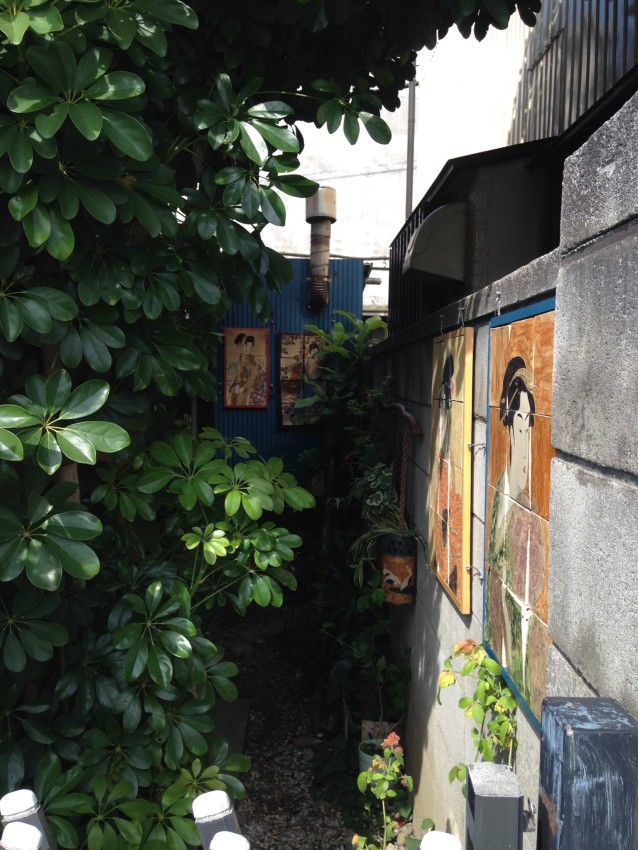Outsider Art or Outside Reproductions?

I often cycle by a house that has hand-drawn portraits hanging outside on their concrete fence. At first, from a distance, I thought somebody had copied photographs of people onto cardboard and hung them outside. One day, however, I stopped and looked carefully at the portraits. They were ceramics!
I think this is a copy of a famous painting from the 1920s-1930s. I know the style but not the artist’s name. Sorry!
This person also made vases. These two show the wind god and the thunder god from a screen by Tawaraya Sotatsu in Kyoto. It is a national treasure from Kennin-ji Temple.
Is that Kiki, the little witch that ran a delivery service? Not sure…
Two plant holders looked like soccer balls with the top cut out. (Saitama is known for its soccer fans who go to extremes to show their support.)
 Even the top of the mailbox has a ceramic plaque on its top! More soccer!
Even the top of the mailbox has a ceramic plaque on its top! More soccer!
This little piano box sits on top of the brick fence with a lid that can be opened. Nothing was inside except for dead leaves.
This clock was quite small but it showed the correct time! Kimono-clad time keeper?
 The two on the right are copies of famous bijin (beauties) from ukiyo-e woodblock prints. I wonder why they are hanging in frames rather than cemented directly onto the wall dividing the properties. More copies of famous Japanese pictures can be seen on the far wall, too.
The two on the right are copies of famous bijin (beauties) from ukiyo-e woodblock prints. I wonder why they are hanging in frames rather than cemented directly onto the wall dividing the properties. More copies of famous Japanese pictures can be seen on the far wall, too.
Who is this person? I think whoever it is went beyond what people do at classes in the community centre. This person obviously enjoys Japanese art and has the talent to copy famous pieces of art. Only the three-dimensional pieces, however, are originals instead of reproductions. If these are reproductions, do they qualify as outsider art? Or are they just outside art? After stopping my bike to get a closer look, I have more questions than answers. What do you think?









Leave a Reply